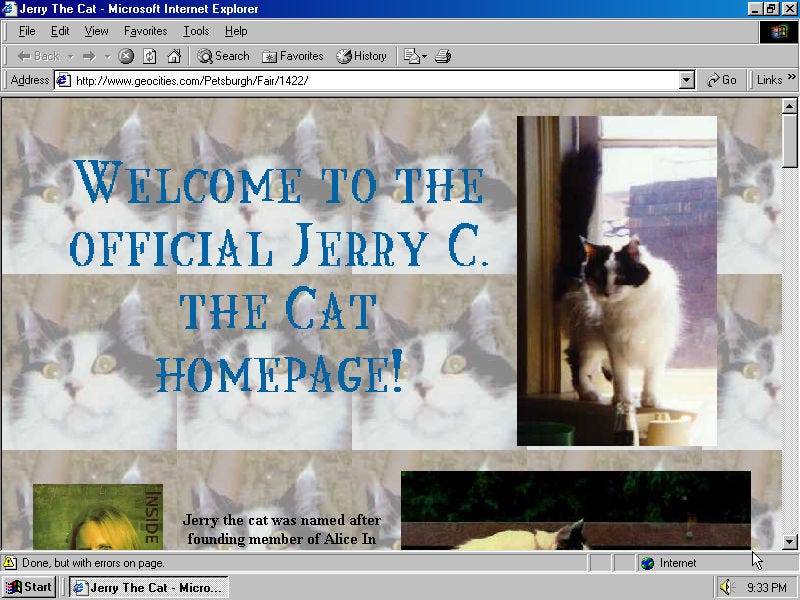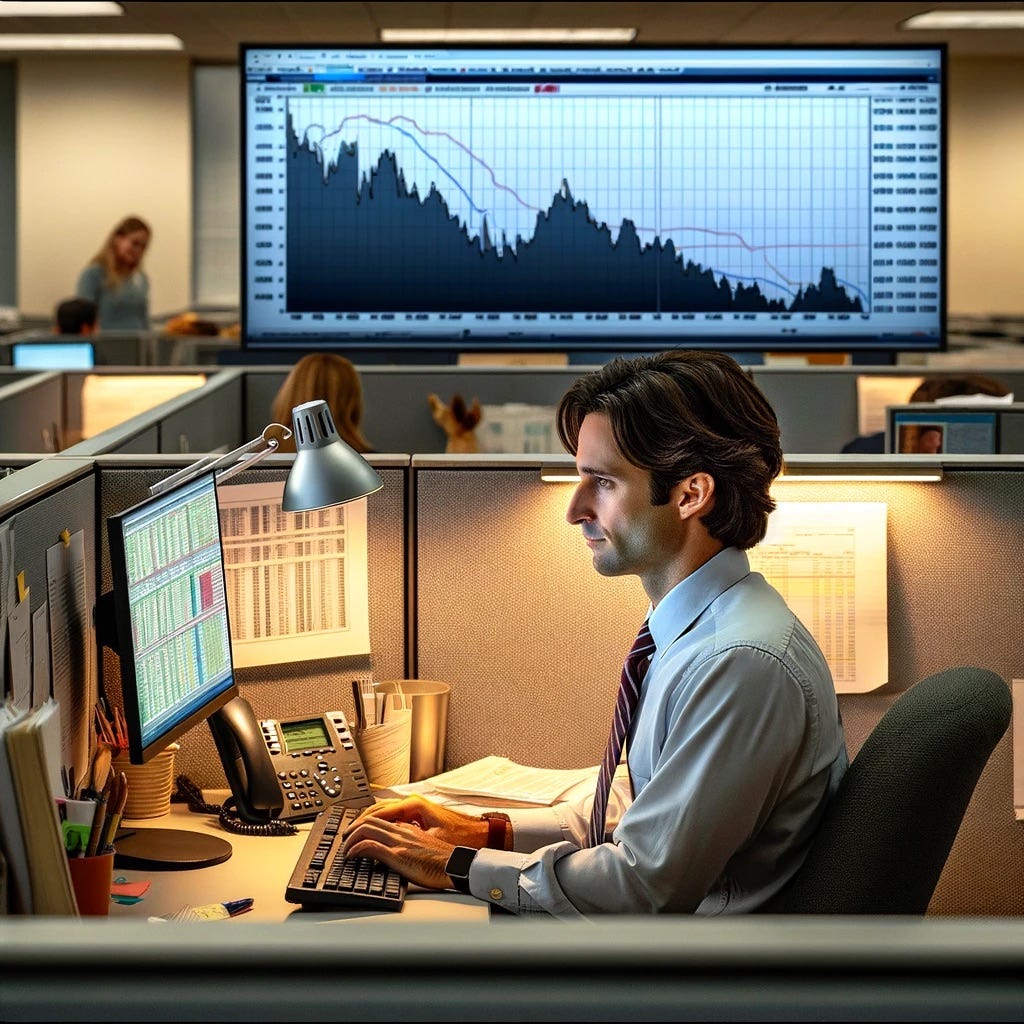Employee Engagement Is On the Decline
Workers are checking out at higher and higher numbers - how can companies reverse the downward trend?
You know that kid in the back of the class who carved stuff into his desk and stared off into space while the teacher went over the lesson? More and more white collar workers are turning into that disengaged student, and it spells bad news for companies in terms of retention and quality work product.
So how do we get the desk carver to re-engage at work - and more importantly, make sure they’re not defiling the precious shared desks in the open office plan? We can take an idea or two from how agencies approach creative messaging to garner consumer attention and then ensure the landing experience is everything it can be through to conversion.
Drive Up Those Engagement Rates
One of the KPIs media agencies tend to follow for their clients is that of engagement rate: how are consumers interacting with the media you’re putting out into the market? For media that is meant to drive people to site to take some kind of action (buy a widget, book an appointment, make a reservation), it’s critical that have that creative messaging appeal to the right people and get them to site.
But getting that click is only half the battle; the site needs to do its job and convert the user. The two have to work in tandem - like Jack Torrance at the bar, the creative has to set them up and the site has to knock them down. If you have the best creative in the world but people get to a site that is a facsimile of a GeoCities page, you’re not going to see results. You need people engaged and offer them a clear path to the desired result.
Mash That Subscribe Button
So the fact that employees today are as disengaged as ever is concerning, for a couple of reasons.
The first is the demographic breakdown of those most likely to be disengaged:
Those under 35 (remember intergenerational communication breakdowns)
Those who could be remote, but are 100% on site (where do we begin?)
Those who are 100% remote (we’ve covered this before as well)
The second and third example here are much more easily dealt with here by creating a common-sense hybrid working model. But the younger millennials and Gen Zers? That’s a tougher nut to crack.
Because one of the main levers executives think they have to drive motivation in the workplace are promotions and raises. And yes, these are rewards that many tend to strive for in the workplace, but if we return to the lens of engagement with creative and site-side conversion these extrinsic rewards firmly fall in the latter category.
At least within the six agency holdcos that essentially control the global advertising industry, titles and salary across most levels and disciplines aren’t wildly different. The career path and salary bands from one holdco to the next are not, by themselves, going to be a massive distinction in a job search. Sure, you can bounce around for $10K here or $20K there, but in the grand scheme of lifetime earnings it tends to all wash out.
So while companies need to figure this out (and they have - the beaucracy behind career progression at agencies is well-established), it’s not going to drive engagement. The site is working fine - so why does the creative feel like a click-baity pop up ad you can’t x out?
Affianced
The dangling prize of a promotion or raise isn’t enough to keep employees engaged day-in and day-out. There needs to be something more and it typically isn’t going to come from extrinsic rewards.
The largest variable in anyone’s workday is their manager or boss. A good boss can make work challenging in all the right ways: opportunities to grow, work that gets kicked up to someone the employee respects, and a desire to not let down the boss they like. And the opposite of all of this is true: a bad boss can truly make someone’s daily work life miserable and disengagement will end up being the least of the problem behind decreased quality in work product and attrition.
Another driver of daily engagement at work is the feeling of kinship with the mission of your job. Now, I can hear a lot of elder millennials and Gen Xers (and the one or two boomers who may read this esteemed newsletter) rolling their eyes so hard their necks are at risk. For many of us, a job was just that: a job. Especially for those who came of working age in recessions (the dot com bust catalyzed by 9/11, the global financial crisis of 2008), a job with a steady paycheck and healthcare was enough to keep us engaged at our cubicles (remember those?)
But that’s not the case for today’s workforce - and while we can wring our hands and shake our heads while muttering “Damn kids,” it doesn’t change reality. And that’s a good thing! When macroeconomics are stable enough that an incoming workforce gets to focus on things like the mission or purpose of a company it means things are working well. Fear is not - and should not be - a driver of sustainable employee engagement.
There needs to be more than just a paycheck to get people engaged at work. A company’s culture is key here - what kind of qualitative environment are they working in? Do they have flexibility to determine their own working arrangements? Do they have a permanent spot in the office they can feel is their own? Is there a sense of comeraderie at work that can help push people through tough times and enhance the good ones? If the answer is no to these questions, it might be time to revisit some company-wide policies.
On top of this, what is the company’s mission or purpose? In client services, this goes two ways - the firm’s mission or purpose and the client’s. You could work at the best agency with a solid raison d’etre that you’re fully bought into, but if you’re pushing tobacco-based products for an industry whose product is essentially death you’re unlikely to feel engaged. On the flip side, you could be working on the coolest client but if your agency is a nightmare, it will never be your dream job.
Am I Disengaged?
Sometimes you need to zoom out and take stock of your current working situation: are you disengaged? This newsletter sees disengagement as different than quiet quitting in one important way. Quiet quitting is a conscious decision to do your job as per the job description and nothing more. It’s not about cutting corners or doing a bad job, it’s about doing the job you’re paid for and not going above and beyond.
Disengagement is more about apathy and lack of desire to do a good job - regardless of the job description for your role - where work product and attitude suffer. Quiet quitting self-talk may look like “I’ll do this task, but I’m not doing the other task because it’s not my job.” Disengagement might look like “Whatever, I’ll just do the absolute bare minimum and take a couple shortcuts to get these deliverables out the door so I’ll stop getting bugged about them.”
If you know you’re not pushing yourself to be as good as you can at work, you may be quiet quitting (in which case a change of jobs likely won’t do much) or you may be disengaged (in which case a new team or role might be in order to jumpstart your motivation.) It’s important to know the difference if you’re looking to up your career.
Grab Bag Sections
WTF Red Lobster: Everyone is pointing at Red Lobster and saying they sank their own financial ship via their endless shrimp promotions. And while these promotions were not money-making ventures (there is a reason good agencies tell restaurant clients to use promos lightly given their margin-destroying power), the reality of Red Lobster’s demise goes deeper than endless shrimp and any potential troubles in Jay-Z and Beyoncé’s relationship.
In truth, Red Lobster is the victim of predator capitalism. Darden Restaurants - the holding company named after RL’s founder - had an activist investor on their board that essentially made them spinoff Red Lobster. They were bought by Golden Gate Capital in 2014 and the private equity firm wasted no time in beginning to strip Red Lobster of its assets for cash. Two years later they sold all of the real estate under the restaurants to help finance the very deal to buy them (the $1.5 billion the real estate deals generated went to Golden Gate, not Red Lobster.) Keep this in mind: the endless shrimp promotions lost Red Lobster $11 million. The rent they were paying on land they previously owned for the restaurants? $200 million. Which do you think had a worse effect on the company’s bottom line?
The same year that GGC bought Red Lobster to strip it of its assets, Thai Union Group - one of the largest seafood suppliers in the world - took a minority stake in RL. In 2020, they made the relationship more official and became the majority owner. Thai Union quickly alienated the Red Lobster old guard, watching decades of institutional knowledge walk out the door of the Orlando headquarters as they introduced levels of toxicity into the company previously unknown. They also cut out other seafood suppliers to favor their own parent company at higher costs, further stressing RL’s expenditures.
So while it would be so easy and convenient to point to endless shrimp promotions as the reason for Red Lobster’s downfall, the truth - as it almost always is in corporate America - is a lot more complex. Between Golden Gate Capital stripping the company of its valuable real estate and Thai Union Group destroying the company’s culture while lining its own pockets through self-serving supply chain deals, Red Lobster never stood a chance.
Album of the Week: An artist who emotes through his rhymes, but with a chip on his shoulder the size of a boulder, Millyz is the hottest rapper out of Boston right now (and certainly fits the mold of what a Bostonian is.) His album Holy Water is worth your time.
I was having a conversation with a college friend at dinner recently (shout out Banyan - we need sponsors because Dunks won't answer my calls) about who the most famous rapper out of the 617 was and we reluctantly settled on Benzino. Let's hope Millyz can do better than that.
"Last Time" is a great introduction to Millyz - slow, soul-bearing, showing off the raspy, almost whiny, voice in his bars. "Signature" has a solid hook and good feature from Fivio Foreign. "Soul Bleed" has a haunting piano that adds to the catharsis. "Kobe Season" is that energetic Millyz that shines through on the album with that chipmunk soul sample this newsletter is always a sucker for.
Quote of the Week: “Either you run the day or the day runs you.“ - Jim Rohn
Editors Note on AI Images: This newsletter has ceased freeloading on their work license and now has access to OpenAI Plus, which allows for a more conversational discussion for image generation. While this helps refine the images, it disallows a simple prompt to be in the alt text.
See you next week!











